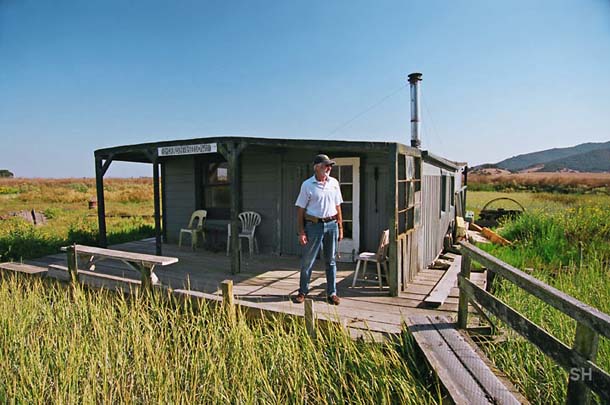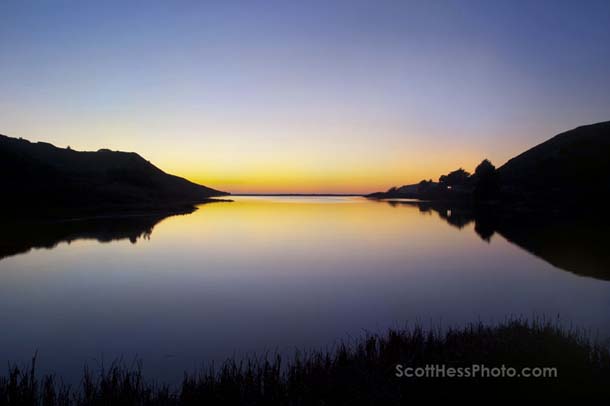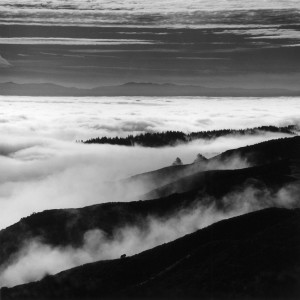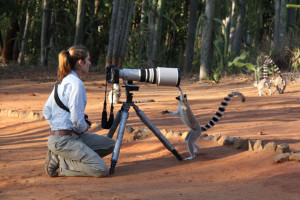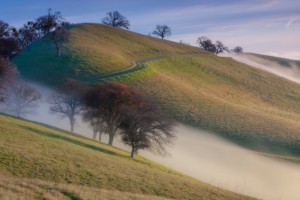Petaluma photographer Scott Hess was onthe ground recently when protesters rallied against the planned construction ofan asphalt plant across from Shollenberger Park.
For years, local nature lovers anddevelopers have argued over the right to build factories across from thewetlands area. The issue iscomplex and perennial, as the two sides struggle to frame the site either as abeautiful park or as a dismal slough, suitable only for dredge spoils.
Hess has created beautiful images of thissite, and many other environmentally criticasites in a life’s work ofactivism-through-art. Hiswork spans the Bay Areaand beyond, and includes not only nature photography, but rural and agrarianimages, architectural and cultural motifs, and even modernistic abstractcompositions. Gentle andsoft-spoken himself, his work is nonetheless vivid and bold. Published in many magazines, andexhibited in diverse galleries and museums, his accomplishmentsrun a broad gamut. His work has alsoappeared in Bay Nature.
I recently spoke with Hess on thetelephone, to discuss his photography, his activism and his thoughts about theworld.
Q: On Sunday, you took a group photograph ofthe participants at the Stand Up for YourWetlands rally who had gathered to protest the planned Dutra Asphalt plantnear Shollenberger Park. How doesthis protest tie in with your work as a photographer and as an activist?
HESS: Well, I have alwaysused my photography for activism wherever I can. We have political issues around here, on Sonoma Mountain andso on. I’ve used it a lot, beginningwith the Lafferty Ranch issue. I have tried to show what that looked likebecause peoplecouldn’t go up there.
It was back in the 90’s, and the city ownsthis beautiful watershed property on Sonoma Mountain, the headwaters of AdobeCreek. It’s a very long, narrowproperty that has the creek running up the middle of it. It’s a beautifulplace.
There was a neighbor who wanted to buy it, awealthy neighbor. So we didn’twant the city to sell it, we wanted to hold on to it so that possibly it couldbe opened some day. That’s where Ireally started with the activism. I hiked up there, I guess, illicitly and photographed it a lot and showedpeople what it looked like and we used those images a lot to help publicize theissue. There was a very active group and I used my photography for that.
It didn’t get sold, but still the neighborthreatens to sue if the city lets anyone on there.
Q: I understand thatyou were a close friend of Petaluma Riverkeeper David
Yearsley,who recentlydied. How do you carry on hisvalues and continue his accomplishments in your own work?
HESS: We were totally onthe same page. We had a greatfriendship. We did very differentthings. He was a real organizer. We share the same values completely: toprotect the watershed, to zero in on the actual natural beauty that is aroundus and keep speaking about it and keep amplifying it so that it’s a valuethat’s in the air all the time. Sowe always shared when he wanted pictures. I’d try to get them.
Q: At one point youworked on a calendar, called the Ecobabes, as a fundraiser for the Sonoma County ClimateProtection campaign. Thatorganization defines its mission with three verbs: to inspire, align andmobilize. If you had to condenseyour own mission into three verbs, which would you choose and why?
HESS: Well, I’d alwayswant to inspire. I don’t knowabout aligning. I just go out and do what I love. It would be nice if things alignedaround it but that’s not a conscious thing. On that project, [my mission was] especiallyto put some focus on these young women, who are pretty cool people. We got a little bit of criticism for itbut all-in-all, it was good because we wanted to put some focus on these youngactivist women.
Q: So your three words would be “inspire”, “do”and “put a focus on”?
HESS: Yes.
Q: How does your workas a photographer relate to your work as an activist, and visa versa?
HESS: Many times you can use the photos for a cause. It stems out of a commonappreciation. Any kind of activistappreciates something and stands up for it. And the appreciation and response to beauty is what drivesme, too. I stand up for the beautythat I see, for the integral systems that I see around me that are oftenchallenged by our industrial world.
Q: What are the challenges and obstacles that you face in your work,and how do you deal with them?
HESS: Probably the biggestchallenge is making a living. It’stough, if you keep doing it, if you’re doing exactly what you want, thoughsometimes it doesn’t line up with a paying job.
Q: Are you doingexactly what you want to be doing right now?
HESS: Yes, pretty much. I’ve done that, even though it has cost me. It’s a challenge sometimesto make a living.
Q: So what do you doabout that?
HESS: I live frugally. And sometimes it works out and you getpaid nicely. And sometimes youdon’t. It’s not predictable.
Q: Are there otherchallenges and obstacles?
HESS: Just having enoughtime, and time management. I always feel like I have awesome stack of imagesto edit, and you have to deploy them properly, and file them properly, and getthem used properly. It’stime. I have more enthusiasm thanI do time.
Q: You photograph wilderness and rural landscapes. You also photograph architecture,street culture and you even make modernistic abstract images. How do you resolve the tension betweenwilderness and civilization in your own mind and in your own work?
HESS: It’s a tension I live with. We’re all right in the center of that tension, all the time,actually. So I don’t resolveit. I live with it. It’s kind of a mysterious thing we’reinvolved with here. I haven’tfigured it out. I just goout there and respond to whatever I think is beautiful and significant and letthe chips fall where they may. Ican’t harmonize it all in my mind, actually.
Q: You havephotographed many leaders of the environmental movement through theBioneers. Their mission statement asserts, “the hour is dangerously late,yet there appears to be a worldwide awakening. The next ten years will be themake-it-or-break-it period…” How pivotal is this moment intime?
HESS: It really is apivotal time. I don’t see how we’re going to get out of it unless we have somekind of energy breakthrough. I really don’t see how we’re going to get out ofour predicament. I’m just hopingthat by amplifying the best I can at every moment that we’ll find a way. But itis a challenge.
Q: Many of Bay Nature‘s readers are avid naturephotographers themselves. Whatthoughts do you have for emerging nature photographers?
HESS: Go at it. Just doit. Keep doing it. And keep looking at your pictures. If people want to have their photos beuseful or be shared, just keep photographing a lot. Look atthem. Edit them. And think about them. And file them properly.
Q: Returning to wherewe began, if you could have the undivided attention of Bill Dutra, CEO of theDutra Group, what would you say to him?
HESS: The Petaluma River, that spot that they want – it’s not the rightspot. Find some other spot, butnot that spot.
Q: Is there anythingelse that you would like to share?
HESS: A lot of what I dois sort of mystical impulses. I really don’t have a rational explanation. I do have a mystical love forthe landscape and the land; a real visceral, personal energetic connection withthe landscape. I just love it andI respond to it. I guess mostpeople do. I guess most peoplewant to belong to a landscape.
My current project is photographing all thesebatteries, the coastal defense system around the Golden Gate. They are very fascinating historically and they are incredible placesvisually and strategically. I wasdrawn to that just by chance. I’vebeen working on that pretty seriously ever since. I don’t know why. So it’s just sort of a mystical connection.

.jpg)
